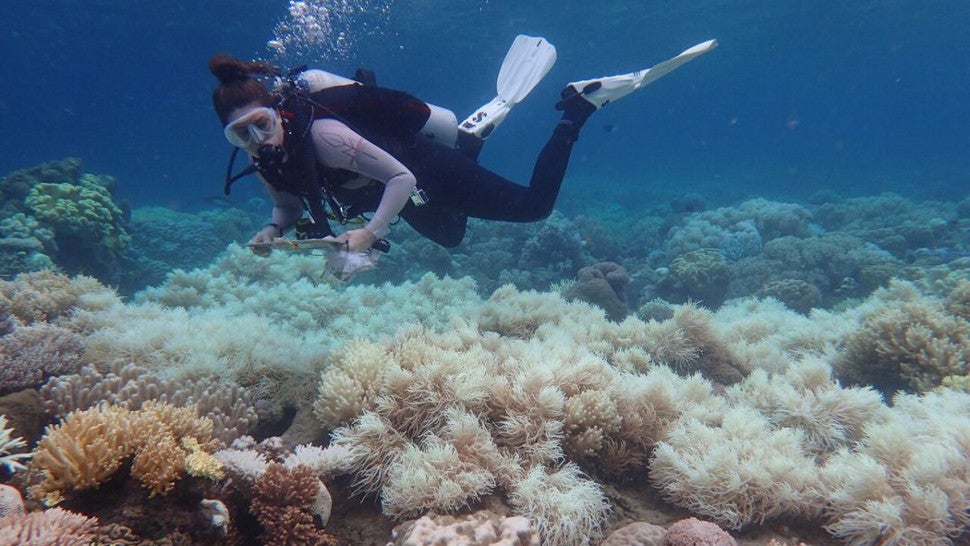
For the second time in 12 months, Australia’a Great Barrier Reef has experienced a severe coral bleaching event. A recent investigation shows that two-thirds of the reef is now a sickly white hue, and it is not immediately clear if the iconic ecosystem will ever bounce back to its former glory.
Last year, bleaching was most severe in the northern third of the Reef, while one year on, the middle third has experienced the most intense coral bleaching.
Bleaching is caused by abnormal environmental conditions, such as heightened sea temperatures, which causes coral to drive out the algae known as zooxanthallae that gives them colour, leaving the coral bleached and looking white.
Professor Terry Hughes and Dr James Kerry at the ARC Centre for Excellence for Coral Reef Studies at James Cook University carried out the aerial surveys that covered more than 8,000km. This year, only the southern third of the reef has been left untouched.
Mr Hughes claimed that while the reef is struggling with multiple impacts, such as the effects of Tropical Cyclone Debbie that recently hit the area or last year’s El Nino, the record-breaking temperatures driven by global warming is the most pressing problem.
Kerry said that, it takes at least a decade for a full recovery of even the fastest growing corals, so mass bleaching events 12 months apart offers zero prospect of recovery for reefs that were damaged in 2016.
Given that two-thirds of the GBR is now bleached, there’s concern for the remaining southern portion. Should the entire reef undergo bleaching, it could lead to a terminal event in which the reef may never bounce back; recovery can only happen when neighbouring sections of reef are in physical contact with each other.